
Together we can...
celebrate our heritage


Together we can...
celebrate our heritage
GSSArchitecture is a national, award-winning architectural practice with a dynamic and forward-thinking approach. Operating across the whole of the UK with offices located in Kettering, Leeds, London, Newcastle, Harrogate and Milton Keynes, we specialise in projects where a collaborative approach is required.
We design tailored architectural solutions and place sustainability and inclusivity at the heart of our design ethos. Our project experience includes a diverse range of public and private sectors covering the entire process from inception through to completion, all of which are supported by in-house specialist divisions including Graphics and Conservation and Heritage.
Together, we can bring your vision to life.






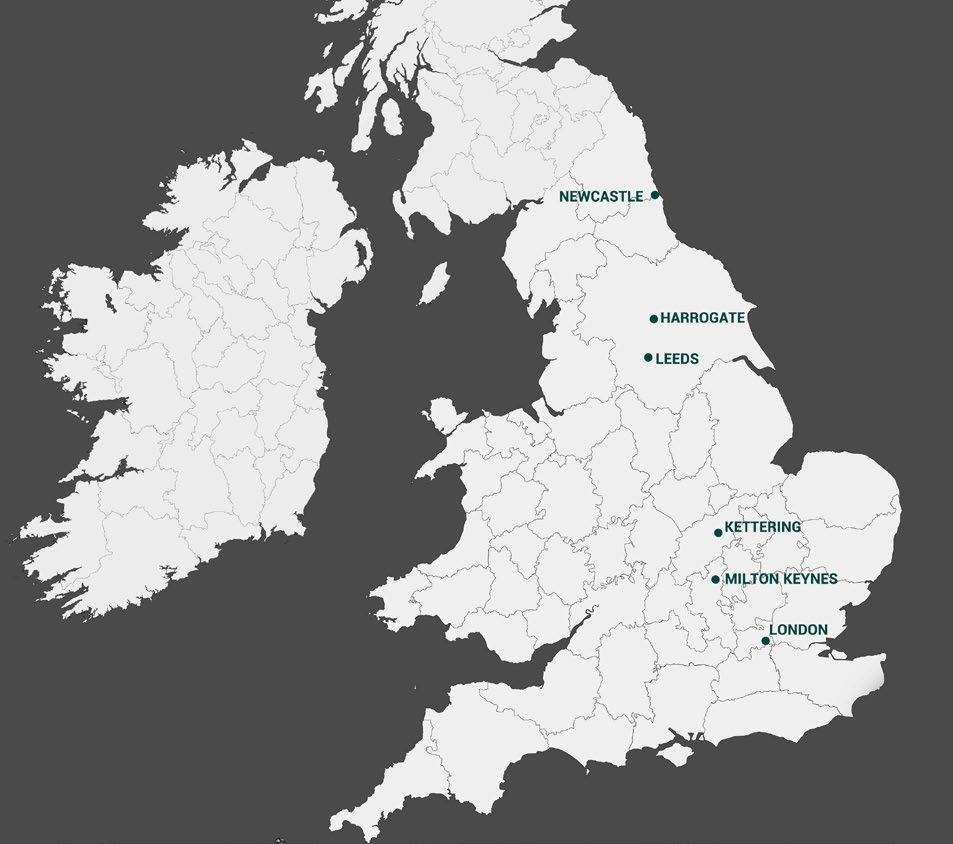
We specialise in conserving and enhancing historic buildings, balancing sensitive restoration with innovative design. Our expertise spans from medieval structures to twentieth-century landmarks, including schools, castles, churches, palaces, courthouses, hospitals, and private residences. Whether it’s careful fabric repairs or multi-million-pound refurbishments, we ensure each project respects its heritage while meeting modern needs.
Our Architects Accredited in Building Conservation (AABC) registered team members have extensive experience navigating complex conservation challenges. We work closely with conservation bodies and local authorities, guiding projects from feasibility studies through to completion.
Beyond preservation, we have a strong focus on sustainability, helping heritage buildings on their pathway to net zero carbon, reducing carbon emissions and the associated running costs.
Our approach integrates:
• Sustainable retrofitting, carrying out a holistic assessment following a whole-building approach to improve thermal comfort and reduce operational costs.
• Building energy optimisation to enhance efficiency while preserving character.
• Decarbonisation strategies for estates, lowering long-term environmental impact.
Whether restoring a historic landmark or adapting a listed building for contemporary use, we ensure that heritage assets remain relevant, resilient, and optimised for the long term.
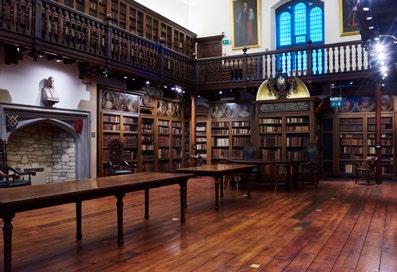



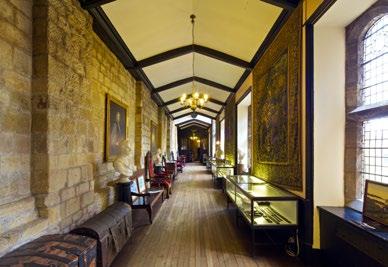

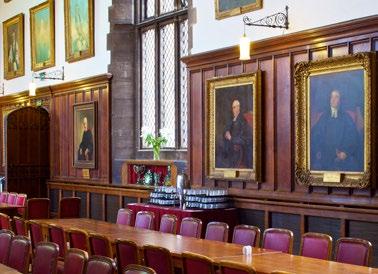

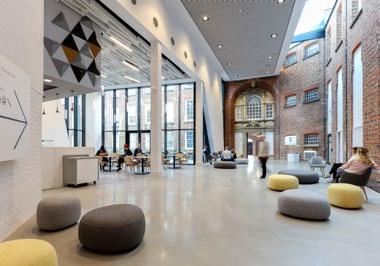
Originally built in 1669, Bishop Cosin’s Library is one of the earliest public libraries in the North East of England. In 2005, the library was recognised as a Designated Collection by Arts Council England for being of national and international importance. The library has been run by Durham University since 1832, with further buildings added during the Victorian period and in 1966, resulting in the set of buildings now known as Palace Green Library.
Bishop Cosin’s Library came with many challenges, but with the support and guidance of our specialist in-house Conservation and Heritage Team, we successfully completed the conservation of the Grade II* listed library, using sympathetic materials and methods to ensure the history of the building was preserved.
The works to Bishop Cosin’s Library are the latest in a complex series of phased renovation and regeneration works to the Palace Green Library site which involved the removal of the majority of the roof in order to correct the ingress of water to the library in order to protect the interiors and priceless collections from damage.
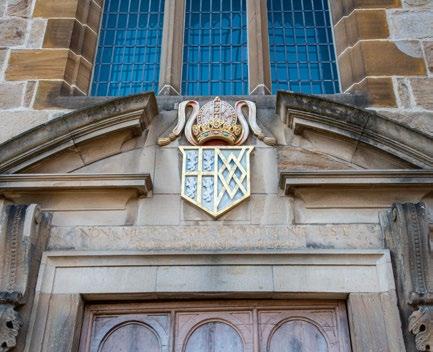


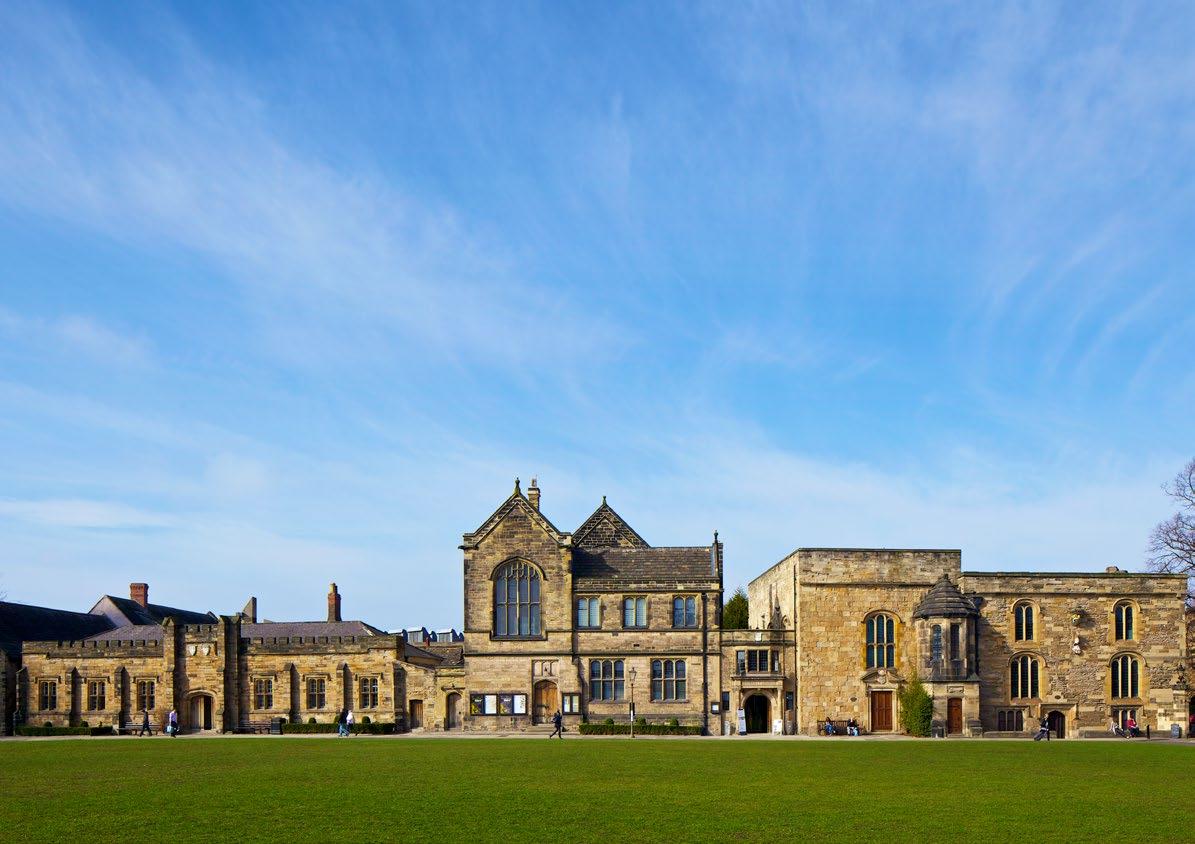
Queen Elizabeth’s Hospital is an independent boys’ school located in the heart of Bristol with a national reputation for excellence, and we were appointed to design a modern Sixth Form Centre to sit within its historic Grade II setting.
The design process included extensive consultation with English Heritage and the Local Planning Authority to develop and agree the design prior to the submission of formal planning and listed building applications.
The new facilities include private study areas, a common room, IT suite and café dedicated to Sixth Formers. With a key part of the school’s ethos being pastoral care, the integration of the Sixth Form into the existing School was also important.
The project was designed and constructed to a very high standard, with the use of high-quality materials and craftsmanship to provide a modern and robust facility.
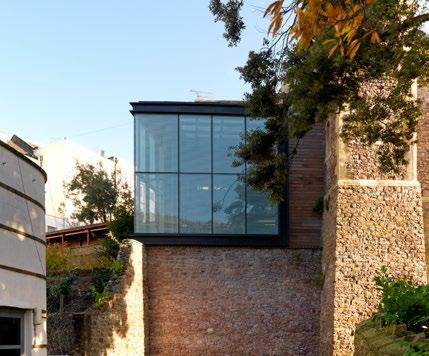
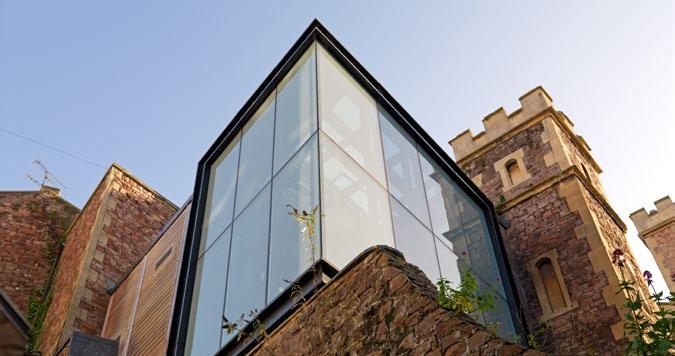
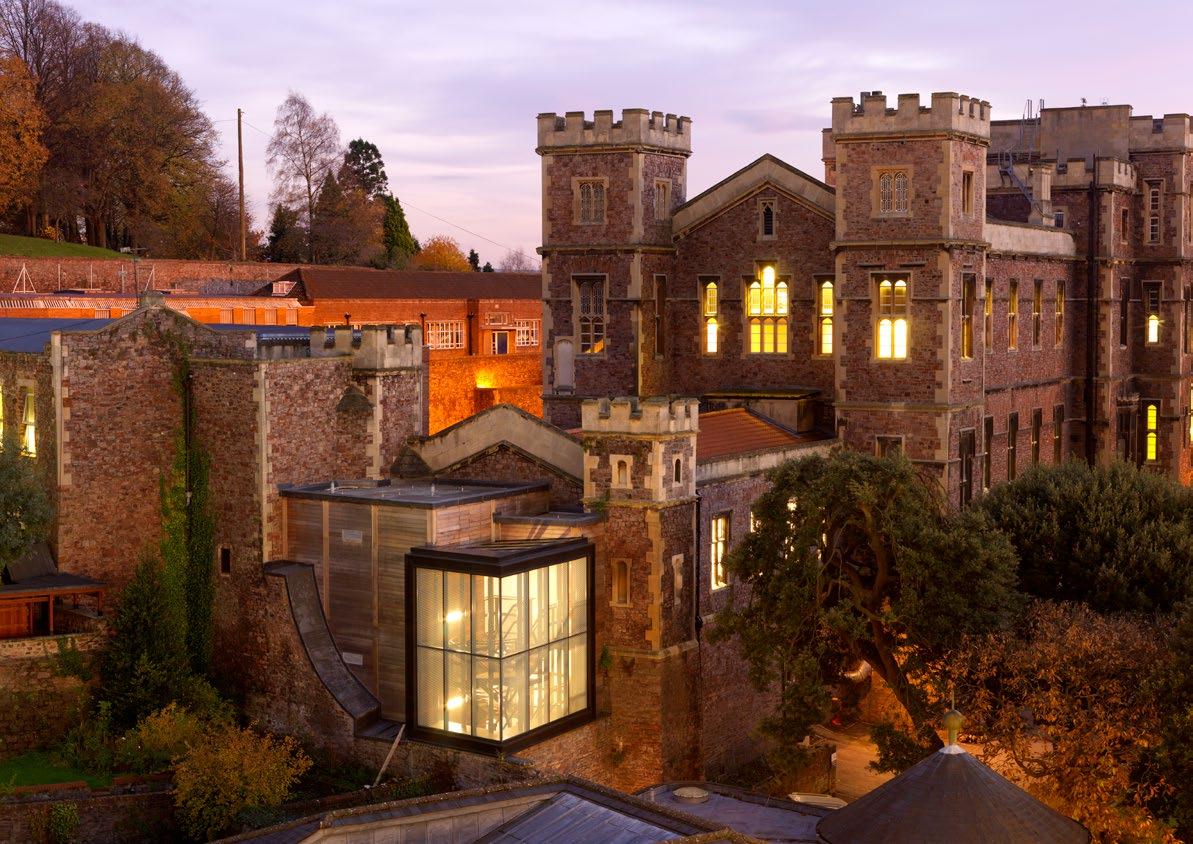
We have been collaborating with Newcastle University on the King George VI Building to explore a conservation-led strategy aimed at reducing energy consumption and associated CO2₂emissions, while also addressing the necessary structural remediation measures.
Originally built in 1936, the Grade II listed building currently houses the Schools of Education, Language Sciences and Pharmacy. With the help of the team, we have undertaken a decarbonisation study to understand how the building can be transformed into a much more sustainable part of the Newcastle University campus, supporting their aspirations in their journey towards net zero.


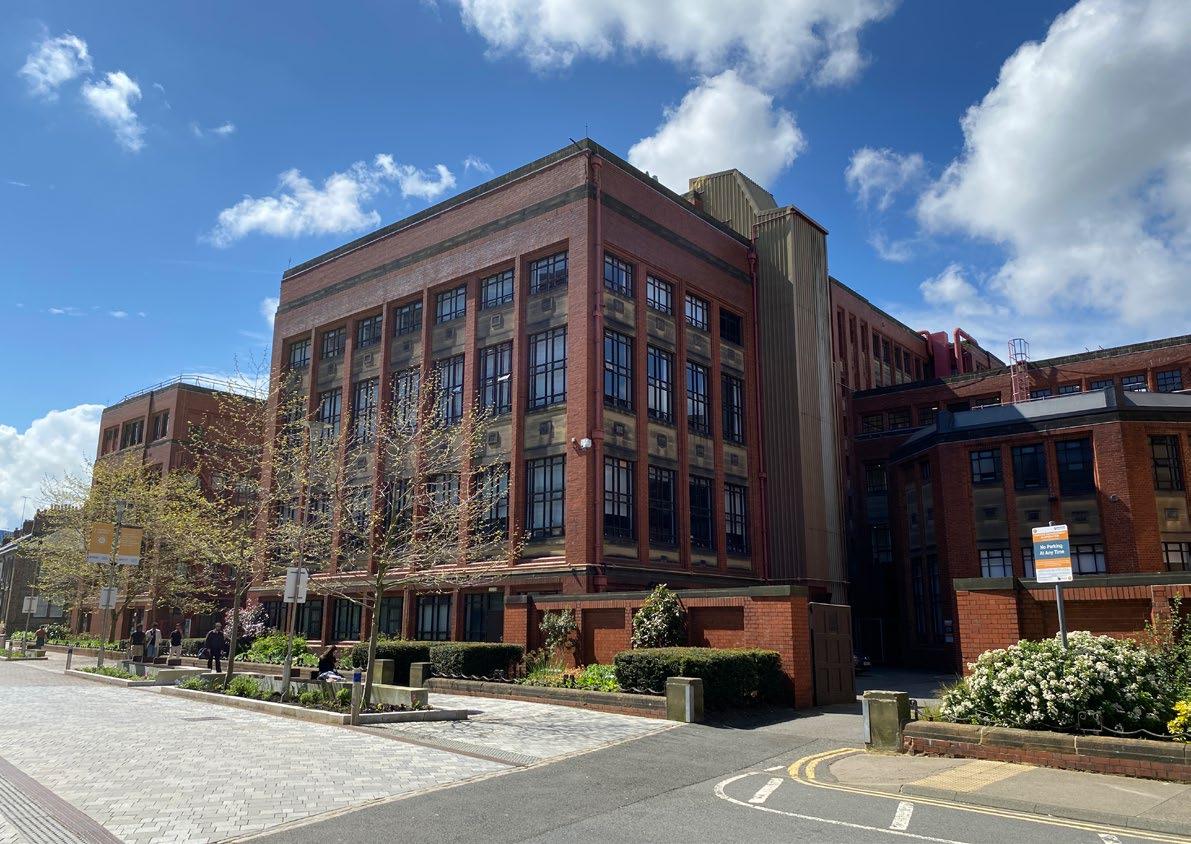
GSSArchitecture are working closely with Amber Valley Borough Council on the Grade II listed former Grammar School building, which will be restored and repurposed as a mixed-use development, with business space aimed at local start-ups, community facilities, and a large hall ideal for performance and creative events. The building had unfortunately been left vacant for several years before being purchased by the Council. We were tasked with developing a scheme from RIBA stage 1 to 7 to save the building and provide spaces which will benefit the local community and help to regenerate the town centre.
A major aspect of the project brief was to improve the sustainability of the existing building. GSS worked closely with M&E engineers to remove the gas connection, develop a sustainable, all-electric, heat pump-based strategy for the heating system and increase insulation of the building fabric.

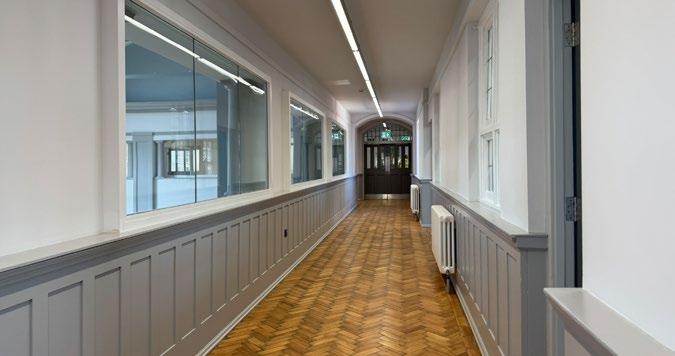
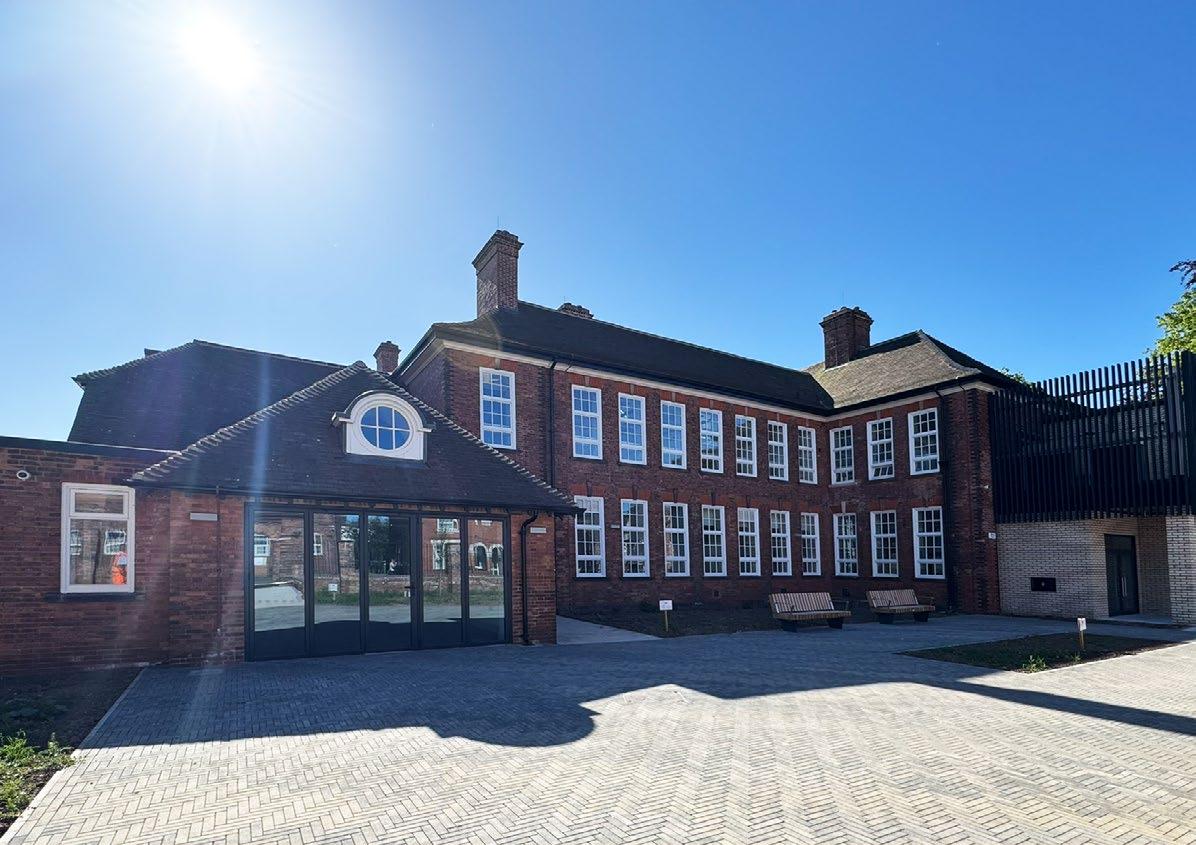
Acquired by The Inn Collection Group in 2021, The Tynemouth Castle Inn is an iconic structure in the North East and now benefits from a refurbishment and an extension.
The designs pay homage to the original architect by restoring the hotel’s art deco heritage, including uncompromised views of the seafront with Juliette balconies to the new bedrooms. The flagship hotel sits within the Cullercoats Conservation Area and has been sensitively extended and upgraded to bring the venue back to its former glory whilst offering more varied and higher quality hospitality.
The two-storey extension, comprising 20 additional rooms, has increased their total accommodation to over 70 rooms. Further extensions include Oswin’s, a new fish and chip takeaway, and Cones Ice Cream Parlour, both of which face onto Grand Parade.
The fully refurbished and expanded kitchen now supports the upgraded bar and restaurant areas, while enhancements to the external facades, seating, and landscaping significantly improve the overall aesthetic and guest experience at both the bar and hotel.


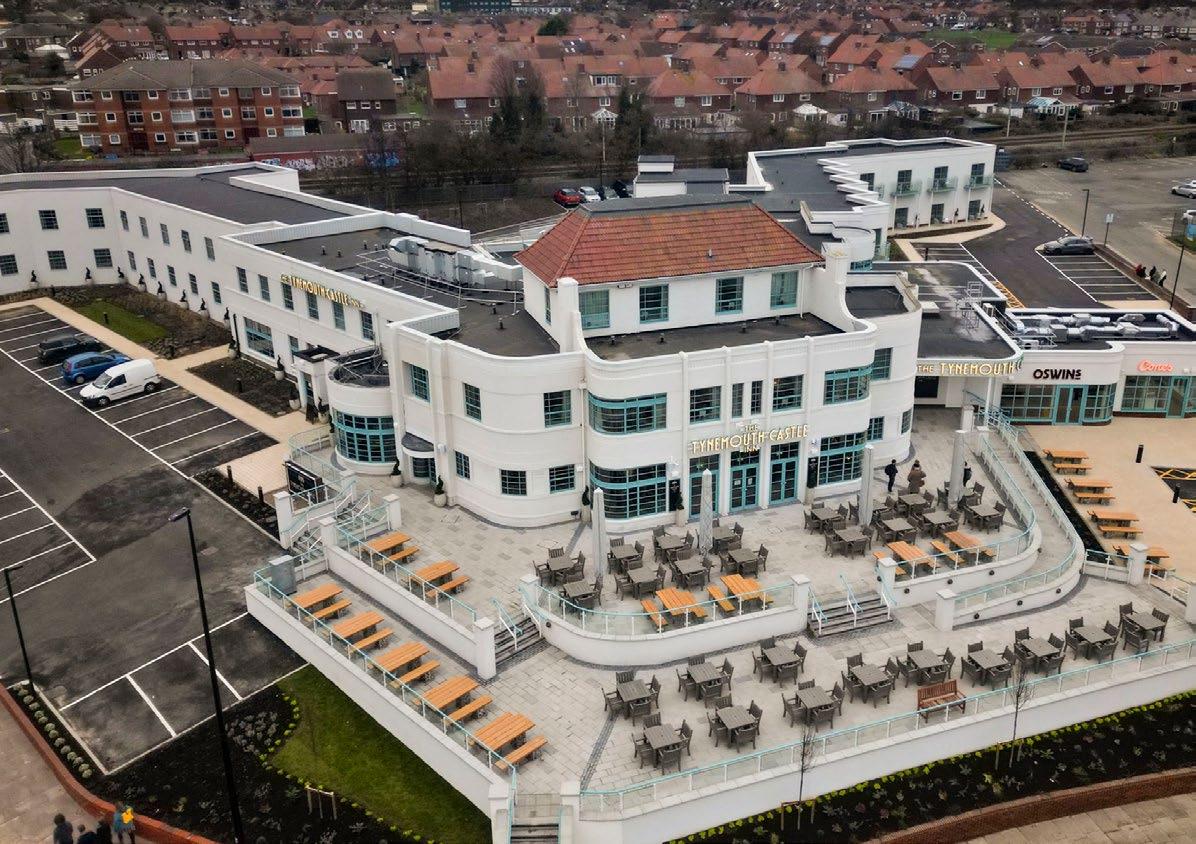
We were appointed by Durham University to undertake a major phased conservation, regeneration and refurbishment of the listed Palace Green Library Site, located at the Durham UNESCO World Heritage Site. A significant part of the project included conservation works to the highly regarded Pace Building, designed by the architect George Pace.
Located within the Pace Building, the Barker Research Library has been transformed to create a purpose-built space for readers to study archives and special collections. The library offers full Search Room services and houses a wide range of archive material, early printed books and other special collections, including 70,000+ books printed before 1850, with 300 incunables; over 1,000 medieval manuscripts; 3,400 metres of archives and artefacts; over 30,000 maps and prints, and 100,000 photographs.



We were appointed as Architects to design the conversion, alterations and extension of the Old Bishop’s Palace, a Grade I listed building dating back to the 15th century. Most recently used as a hospital, the initial phase of work consisted of repairs to the external fabric.
The second phase involved stripping out the medical equipment and conversion of the historic parts to create a Sixth Form Centre, central administration and accommodation for choral scholars. The later single storey part of the building was converted to a new girls’ boarding house.
The works included removing modern wall finishes, which revealed 15th century walls, and improving fire alarm systems, enabling previously derelict parts of the building to be brought back into use. Works were phased to enable early handover of the administration and Sixth Form areas, with the boarding areas available for the new school year.


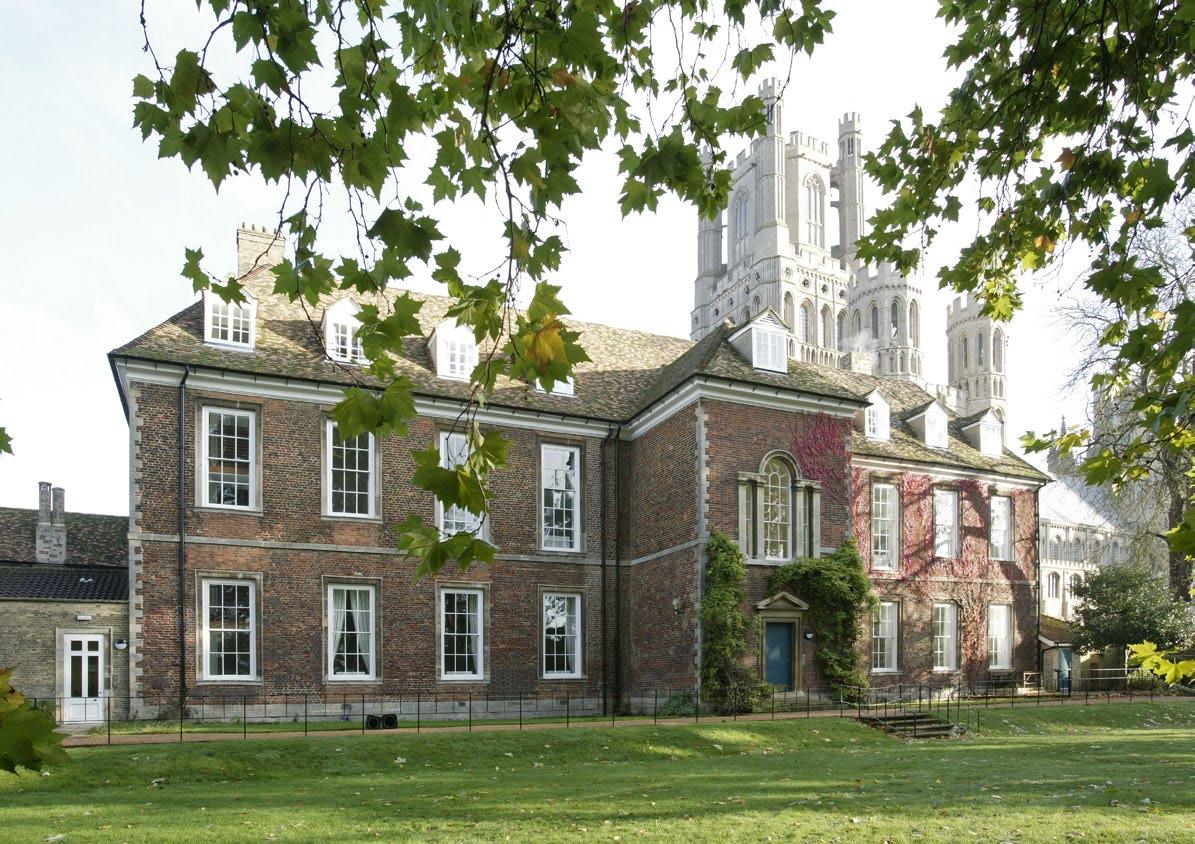
The Angel Inn is a Grade II listed inn located within the English Lake District World Heritage Site thas been refurbished to enhance visitor experience, with internal improvements throughout, including to the bar and restaurant. New terraces and landscaping externally will now allow the Inn to be a destination at all times of the year.
The works have retained the character of the Inn and are sympathetic to its surroundings, providing the historic building with a sustainable long-term future whilst keeping and reinstating its original features.
A core part of the brief was to enable the creation of more internal restaurant covers. This was achieved by creatively reordering the ground floor layout and removing some of the modern insertions to enable a significantly larger bar and restaurant which connects to the external terraces.
Working closely with the local Conservation Team and Planning Department, we established the method of works, areas of sensitivity, and previous upgrades that required intervention such as historically faithful sash window replacement.
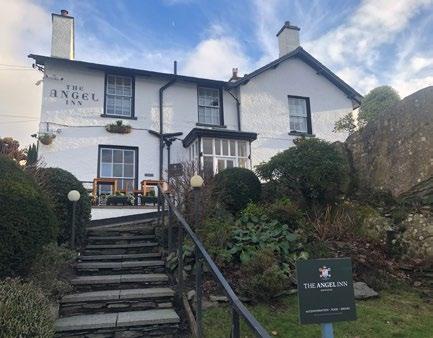


Bradwell Abbey is a Scheduled Ancient Monument and urban studies site which dates back to the 12th century and, as a result of funding from Historic England in 2018 and further funding from the owner, Milton Keynes Council, and MK City Discovery Centre, has undergone extensive repairs.
Appointed as Conservation Architects, we led the site-wide refurbishment which included structural repairs to the Grade I listed chapel and Grade II listed farmhouse and the internal and external fabric repairs to the farmhouse.
Our specialist Heritage Team has worked collaboratively with the Project Team, Historic England, Archaeologists and Ecologists to ensure the repairs are completed sympathetically, whilst utilising methods and materials used at the time of original construction.
Throughout the project, our Team made some interesting discoveries, including a medieval stone carving and original medieval wall paintings.



We were appointed as Architects to design a new dining hall extension for Kimbolton School, an HMC co-educational day and boarding school located in Cambridgeshire.
The extension comprises a courtyard infill to the Mews Building, which dates from around 1870 and houses both music rehearsal rooms and the main school dining hall. The building provides additional seating, together with a new kitchen servery, which has significantly relieved the pressure that was previously experienced by the school at lunch times.
Key elements of the design include a front façade of high-performance, frameless structural glazing, a lead-effect roof containing a clerestory, and the reinstatement of two chimneys to the gable walls either side of the clock tower.
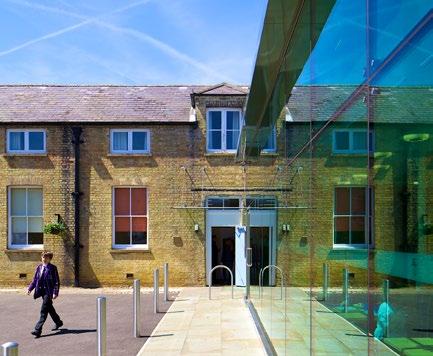
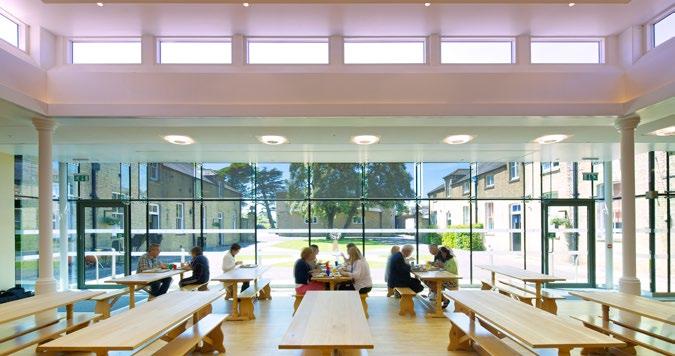

University College occupies the Grade I listed Durham Castle, which dates from 1072 and is situated at the heart of Durham’s UNESCO World Heritage Site adjacent to Durham Cathedral. We were responsible for leading the design of the extensive conservation and renovation works to the interior of the Castle.
Our approach to the project was to retain, reinforce and enhance the historic layout and fabric as an integral part of the refurbishment process. The Great Hall received a new solid oak floor, whilst careful conservation of decorative finishes, including precious stained glass windows, was undertaken in other areas of the Castle. The project also required a sensitive full renewal of heating, power and data systems.
The kitchen and servery were fully refitted to current standards within their historic shells, whilst the bedroom accommodation was completely remodelled to include en-suite facilities. Works were undertaken in close co-ordination with the Conservation Officer and Historic England.
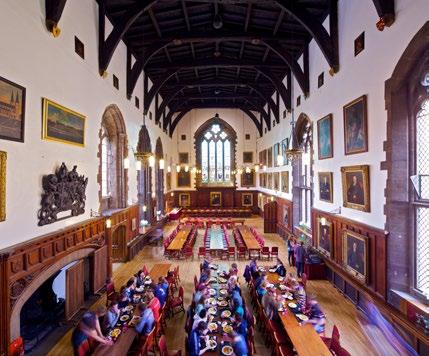
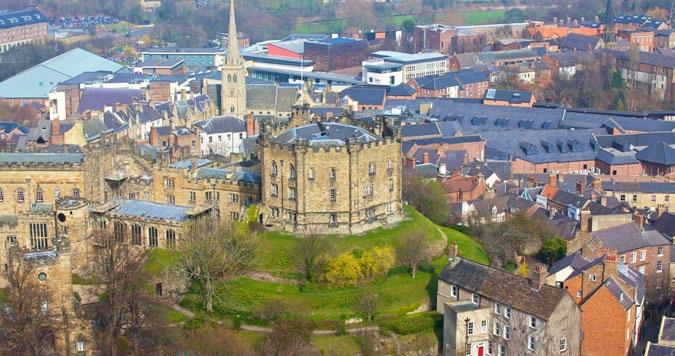
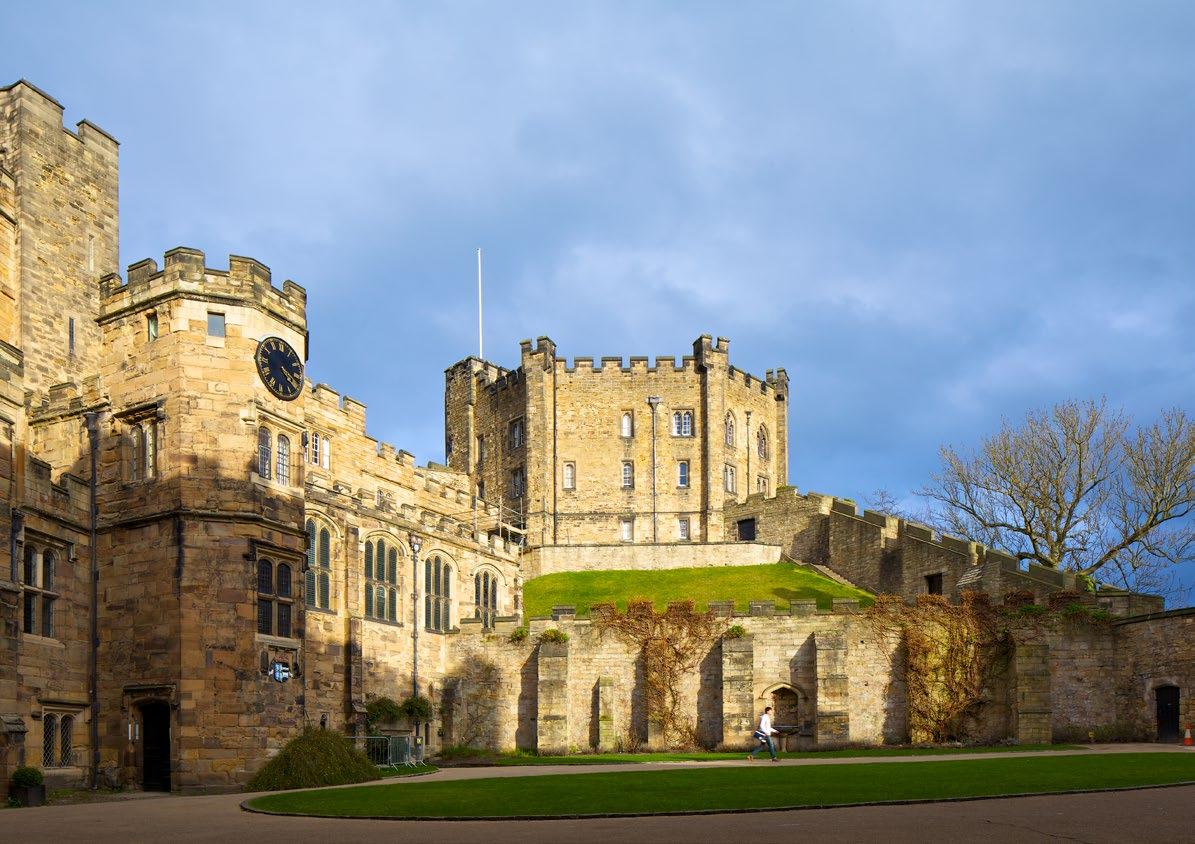
We were appointed by West Northamptonshire Council (previously Northampton Borough Council) as Architects, Lead Consultant and Principal Designers to lead a significant expansion and extension to Northampton Museum and Art Gallery.
These refurbishments formed part of our masterplan for the Cultural Quarter, extending the museum into the former Gaol Block on Angel Street, which was initially part of the museum until being sold off and, until recently, was used as Council offices. Showcasing the museum’s world renowned collection, the reclaimed space now houses a shoe gallery. The location of the gallery allows it to flow into parts of the vaulted structures which formed the original gaol, more than doubling the space on offer to the public.
In addition, a new link space extends into the adjacent Guildhall Road Block, a building designed by our founder, John Alfred Gotch, in 1937. A courtyard extension, designed using glass and sandstone, also provides additional gallery space, a café and a roof terrace.


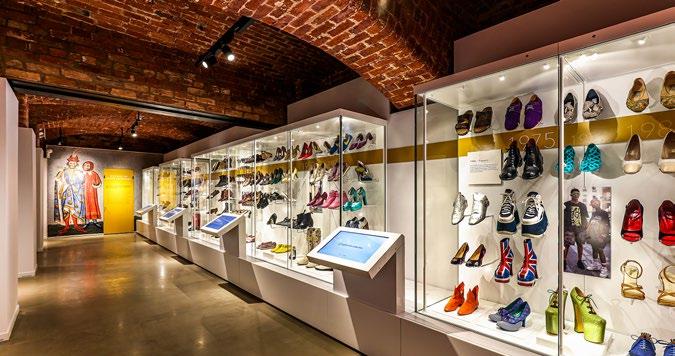
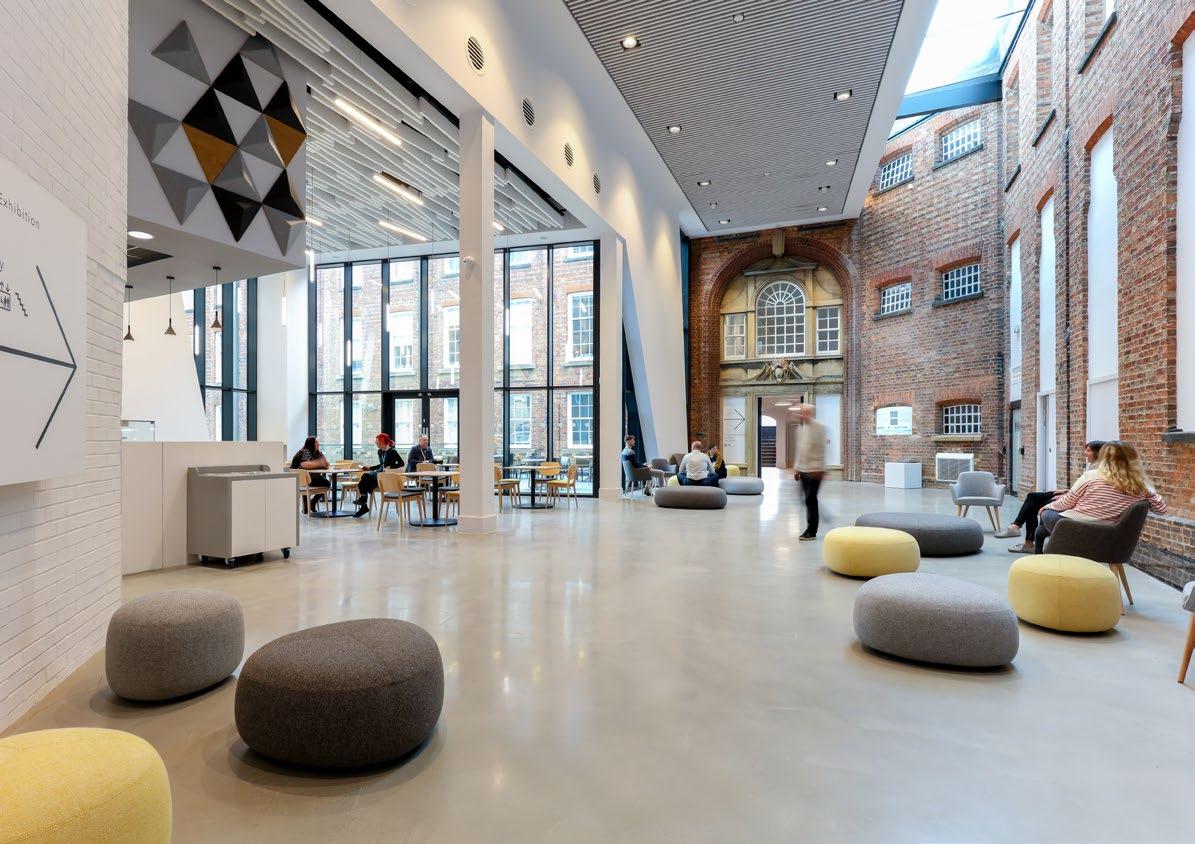
The Knaresborough Inn is located in a picturesque location on the cliffs above the River Nidd. We were appointed as Architects to lead the refurbishment works to the hotel, which included upgrades to the bar, restaurant and bedrooms to allow for a greater guest experience.
The works have retained the character of the Inn and are sympathetic to its surroundings, providing the building with a sustainable long term future whilst keeping and reinstating its original features.



We worked closely with the University of Leeds throughout all approval stages to secure funding from the Heritage Lottery Fund (HLF) for the design and construction of this new, environmentallycontrolled exhibition space.
As Architects for the scheme, the project was fully modelled using Building Information Modelling (BIM), including a fully developed model of the existing listed building elements.
The scheme involved the refurbishment of a suite of rooms to create a newly formed climatically-controlled gallery space and adjoining public engagement room within the confines of an existing, larger campus building, which is Grade II listed.
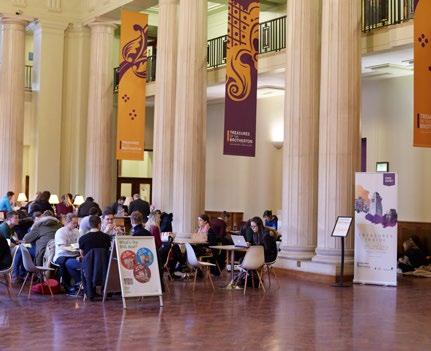



Our work includes the full range of services covering architectural design, feasibilities, 3D graphics and animation, interior design, estate strategies, heritage and conservation, principal designer and one-stop-shop.
Our specialist in-house teams are collaborating with industry leaders to research and develop the latest technologies and processes that can be incorporated into our designs.
Professional services frameworks have become increasingly important over recent years as a method to engage construction professionals in a way that ensures compliance with the Public Contracts Regulations 2015 and that promote a more streamlined way of partnering in the longer term.
As a practice, we have secured positions on a range of established, UK compliant frameworks, including the NEUPC Construction Project Management and Conservation Professional Services Framework, which enables easier, quicker and cheaper procurement routes for our clients.

As experienced Architects we can work with you to explore your options and realise your vision.
We can bring a wide range of innovations and best practice from our different sectors to meet your specific needs and aspirations. This experience includes masterplanning, new builds, remodelling and extensions and specialist heritage advice.
We will work with you in a collaborative way to develop a workable brief to explore design concepts and options, to manage your project through the planning process, the development of detailed design proposals, details and specifications, together with preparing all necessary statutory approval processes.
Feasibility studies are an extremely important part of the development process. By carefully mapping out your options, risks, constraints, and opportunities we can present creative proposals and scheme appraisals that are deliverable, viable and fit for purpose. Developing your brief is fundamental to this process.
Our highly experienced teams work on a wide variety of projects, ranging in both sector and size. This means that the knowledge, experience and ‘lessons learnt’ can be brought to benefit your feasibility brief and our experience allows your dedicated project team to explore all the options quickly and effectively to arrive at an appropriate project delivery strategy.
A good masterplan is not just about the distribution of land use, it should provide you with a sound starting point to create healthy communities and well-planned development strategies. A masterplan should give you a carefully considered and well thought out long-term planning document that serves as a conceptual plan to guide future growth and development.
Masterplanning is all about setting the standard that creates an appropriate sense of place, connecting buildings with social, public and cultural spaces to create environments that help communities to thrive.

As a streamlined part of our service offering, 3DLABS is our in-house digital design studio that specialises in CGI visualisations, 3D printing and people flow modelling. They offer these services to communicate our clients’ designs, concepts, products or services to a wider audience, allowing them to be represented in the most visually appealing medium.
They have been offering these services for nearly a decade, gathering a diverse client base with their own unique needs and requirements.
The studio is made up of a highly skilled team, led by their Studio Manager who has over 15 years of industry experience. He is supported by a team who each bring their own passions and specialisms, with photorealistic renders, interior design, and graphic design to name a few.
In recent years, there has been an increased awareness of how the built environment can impact health and productivity, and its added benefits to help institutions flourish. Organisations are now focusing their efforts on how to use the built environment for mental health and wellbeing by encouraging choice, movement and relaxation, controlling temperature, noise levels and air quality, ergonomic furniture, plants, and adding breakout areas. These are all fundamental components of good interior design.
Our interior design services include interior layouts and drawings, internal elevations, room data sheets, space planning and interior architecture, furniture selection and accessories, custom furniture and textile design and colour palette consultation.
Estate Strategies are critically important documents to have in place to provide a framework and direction for how an estate needs to grow and evolve to support you in delivering your strategic objectives. Estate strategies are important to a number of our higher education clients for example, and we have worked with a number of UK based universities to help them define their strategies.
Good Estate Strategies can add value to other large estates, such as landed estates or multi-academy trusts. Our teams have the depth of skills and experience inhouse to work with you and your estates teams to consider whole estate strategies and how individual projects might fit into the ‘bigger picture.’

If you are an owner or custodian of buildings with historical significance, we can help to understand your properties, advise on the best techniques to care for them and make sensitive changes that will mean your heritage assets are both successful and sustainable.
Whether a Grade II listed house or a complex World Heritage Site, all heritage assets have their own story and unique value and getting the right advice from a wellqualified, specialist team can really make the difference.
The importance of the Principal Designer’s role cannot be underestimated and the skills that make a good Principal Designer should never be omitted from a development project. Fundamentally, a good Principal Designer helps to ensure that everyone involved in construction stays safe during the course of their work and complies with the statutory duties and we often provide this service on schemes where we have also been appointed as Architects and/or Lead Consultants.
GSS can give you the confidence of knowing that our organisational approach to Health and Safety is led from partner level, ensuring that all our teams receive regular training, making certain that processes are in place to plan and manage health and safety throughout our projects and helping to protect everyone’s health and safety.
The appointment of a Principal Designer – Building Regulations (BR) is required for all construction projects, from small domestic extensions to complex multimillion-pound developments. If your project is classed as a ‘Higher-Risk Building’ under the Building Safety Act 2022, then additional requirements apply.
Our Principal Designers have undergone competency assessments in line with PAS 8671 requirements and will be able to assist and guide you in navigating your legal duties under the Building Safety Act 2022. They will ensure that you fully understand your duties before any design work commences.
Successful construction projects rely on the right balance between design and project control, including project and cost management. We can offer you a streamlined consulting service bringing together all of the design team partners that you need from across our network of supply chain partners.
Using a one stop shop service is not right for everyone, but it can mean that you benefit from a single point of contact for your integrated design team. Our teams will use their construction knowledge and cost planning experience to offer expert advice on construction approaches and procurement options. This begins from the initial feasibility testing of a project, right through until the handover of the completed building.
All successful partnerships are founded on taking a truly collaborative approach to achieving common aims and objectives. Clear communication is therefore an essential part of collaboration, alongside developing and nurturing a culture of working together as one team. GSS have a successful track record of achieving excellent outcomes through working collaboratively and we can draw on our experience and lessons learnt over the years to encourage and drive collaboration.

With climate change being one of the biggest challenges we face in our lifetime, GSS are committed to ensuring their projects are designed to incorporate innovative, sustainable solutions that not only benefit the building user, but the wider environment.
Our in-house Sustainability Innovation Group are collaborating with industry leaders to research and develop the latest technologies and sustainable processes that can be incorporated into our designs. The basic objectives of sustainability are to reduce consumption of non-renewable resources, minimise waste, and create healthy, productive environments.
GSS’s in-house Artificial Intelligence (AI) Innovation Group is responsible for providing comprehensive guidance and assistance, ensuring the safe and appropriate utilisation of AI within our work.
This dedicated team from across the UK actively explores both the limitations and opportunities of AI, striving to enhance quality and efficiency. We have implemented a structured plan that is aimed at identifying opportunities through harnessing the latest advancements in AI technology and the team will research and assess these to ensure that they align with our moral and ethical standards.
Fostering a collaborative environment, the group encourages innovation and integration of AI technologies that can add value to our clients. Their efforts include developing customised AI solutions, training for wider GSS team members, and overseeing a robust framework for AI governance.
Our in-house AI Innovation Group plays a crucial role in driving GSS’s commitment to leveraging the benefits of AI and maintaining our competitive edge in the industry.
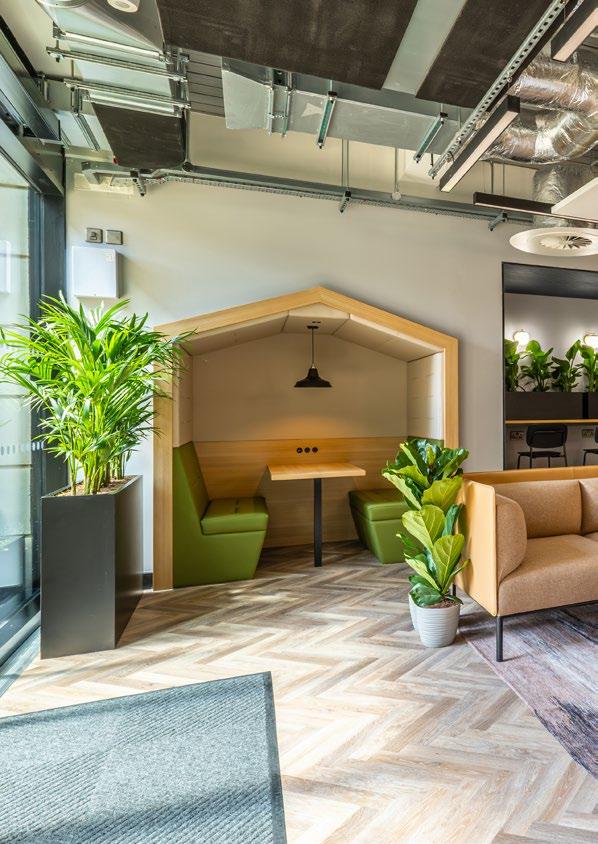

Many of our clients have set Net Zero Carbon or Carbon Neutral targets for their buildings and estates through either decarbonisation of their current estate, or through targeting Net Zero Carbon in new buildings or investments.
We are also on our own route to becoming Carbon Neutral by 2030, a target which, although complex and challenging, we believe to be realistic and genuine.
There is an increasing awareness of how our environment can affect our physical and mental health and the impact that this has on our productivity and wellbeing. The Covid pandemic has reinforced the importance of good mental and physical health for everyone in society and there is an increased focus on the need for more human-centred, sustainable environments that support the people who work and live in them.
We understand that good design is at the centre of this and has real power to improve peoples’ lives and support organisations, delivering places that support health, comfort, and happiness. The quality of environment can help to reduce staff turnover, improve outputs, and attract new people to an organisation.
Our designers are trained to look at how new and existing buildings, and external spaces, can deliver high quality places that is not only functional, adaptable, and efficient but is also welcoming, inclusive and supportive.
Professional services frameworks have become increasingly important over recent years as a method to engage construction professionals in a way that ensures compliance with the Public Contracts Regulations (PCR15) and that promotes a more streamlined way of partnering in the longer term.
As a practice, we have secured positions on a range of established, UK compliant frameworks, which enables easier, quicker and cheaper procurement routes for our clients. In addition to our national and regional frameworks, GSS have also secured places on a number of university frameworks across the country.
For more information on our frameworks and how you can appoint GSSArchitecture for your project, please visit our website via the below QR code:
Scan for more information on our frameworks.














Architects Lead Consultants Masterplanners